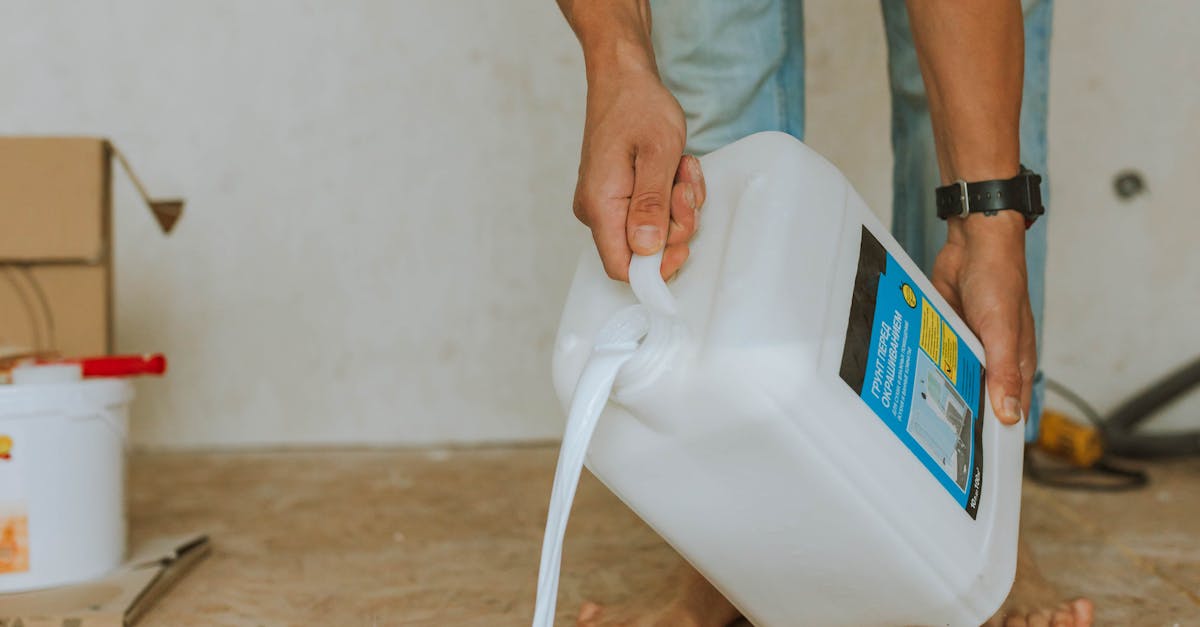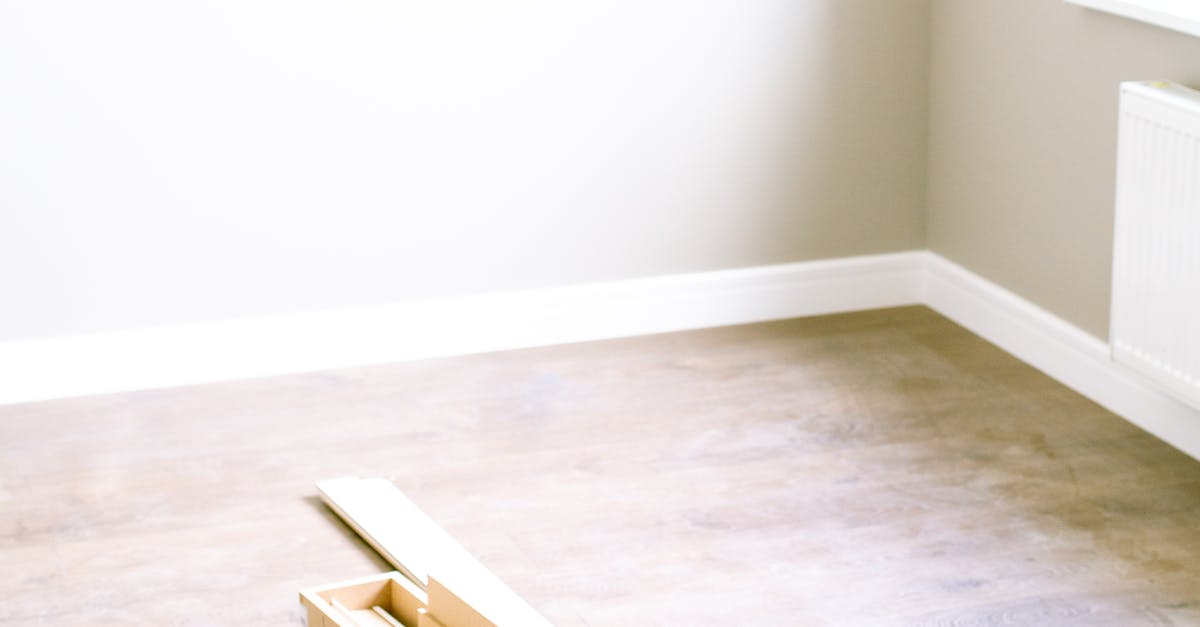
Common Mistakes to Avoid in DIY Refinishing
Many homeowners underestimate the importance of proper preparation when embarking on a floor refinishing project. Skipping essential steps like thorough cleaning and sanding can lead to uneven surfaces and poor adhesion of the finish. Failing to address existing imperfections or neglecting to test the stain color beforehand can result in a less-than-desirable final look. Planning ahead is crucial, as rushing through the initial stages often leads to costly mistakes that could have been easily avoided.
Another common pitfall in DIY floor refinishing is not using the correct equipment or protective gear. Many DIYers might rely on inadequate tools or lack the necessary safety equipment, exposing themselves to harmful dust and fumes during the refinishing process. It's vital to invest in high-quality sanders, sealers, and finishes to ensure a professional-grade application. The right tools not only improve the final appearance but also streamline the workflow, allowing for a more efficient refinishing experience.
Tips for a Flawless Finish
Achieving a flawless finish during floor refinishing requires careful preparation and attention to detail. Start by ensuring the surface is thoroughly cleaned and free from debris. Sanding the floors uniformly helps create an even surface for the finish to adhere properly. Consider using a drum sander for larger spaces, as it provides a more consistent result. Pay close attention to corners and edges where a hand sander or scraper may be necessary to prevent uneven textures.
Choosing the right finish is crucial for the overall appearance and durability of your refinished floors. Oil-based polyurethanes are known for their rich color and long-lasting protection, while water-based options offer a quicker drying time and lower odor. Whichever finish you choose, apply it in thin, even coats to avoid drips and bubbles. Working with the grain of the wood enhances the aesthetic quality and ensures consistent color distribution across the surface. Proper ventilation during this process is also important for both safety and optimal drying conditions.
Time Commitment for Refinishing Floors
The time commitment for floor refinishing can vary significantly based on the size of the area, the condition of the floors, and the method chosen for refinishing. For a standard room, a DIY refinishing project typically takes several days to complete. This includes preparation, sanding, applying stain or finish, and allowing adequate drying time between each step. The actual labor can range from a few hours to an entire weekend depending on individual skill levels and the complexity of the task.
Planning is essential to streamline the refinishing process. It’s important to set aside dedicated time for each phase of the project to avoid rushing and compromising the final outcome. Take into account the time needed for thorough surface preparation, which is critical for a successful floor refinishing job. In addition, be prepared for the unexpected, as older floors may require additional repairs or extra sanding, extending the total time needed to achieve a flawless finish.
Estimating Duration of Each Step
When embarking on a floor refinishing project, it's essential to break down the entire process into manageable steps. Start by assessing the condition of your floors, as this will influence the time required for sanding, staining, and sealing. Sanding is often the most time-consuming part of the process. It can take several hours to complete, depending on the size of the area and the tools used. After sanding, allowing the dust to settle and preparing your space for staining will also add to your time commitment.
Staining can be completed relatively quickly, but drying times must be factored in, which can vary based on humidity levels and the type of stain used. Sealing, the final step in floor refinishing, will require multiple coats. Each coat needs ample time to dry before applying the next. Planning ahead and creating a realistic timeline can help ensure that your refinishing project stays on track and avoids frustration. Effective time management will not only lead to a more polished end result but also make the entire process more enjoyable.
Types of Flooring Suitable for Refinishing
Not all flooring types are suitable for refinishing. Hardwood floors are the most common candidates, especially those made from thick, solid wood. These floors can generally be sanded and refinished multiple times, allowing homeowners to maintain their beauty over the years. Engineered wood floors can also be refinished, but only if they have a sufficient layer of hardwood on top. If the layer is too thin, sanding may damage the underlying material.
Other flooring types such as laminate, vinyl, and tile do not typically lend themselves to refinishing. Laminate floors are made of composite materials that cannot be sanded. Vinyl flooring may be durable but does not hold up to refinishing processes. Tile can be updated through methods like polishing or grout cleaning, but it does not undergo the same refinishing as wood. Choosing the right flooring for refinishing is crucial for achieving satisfying results with floor refinishing projects.
Identifying Compatible Materials
When considering floor refinishing, it is crucial to identify the type of materials being worked with. Hardwood floors are typically the best candidates for refinishing due to their durability and the capacity for multiple refinishes over the years. Popular varieties, such as oak, maple, and cherry, can often regain their luster through a well-executed refinishing process. However, some materials, like laminate, are not designed to be sanded and refinished, which can lead to irreversible damage.
In addition to hardwood, certain types of engineered wood floors can also be refinished, but with limitations based on the thickness of the veneer layer. Knowing the specific product used in your flooring will help determine the potential for refinishing. If the veneer is too thin, attempting a refinishing project may compromise the integrity of the floor. Understanding these factors ensures that any floor refinishing project is approached with the right expectations and knowledge of material compatibility.
FAQS
What are the benefits of refinishing my own floors instead of hiring a professional?
Refinishing your own floors can save you money, give you a sense of accomplishment, and allow for greater control over the process and finished look.
How much time should I expect to spend on a DIY floor refinishing project?
The time commitment varies based on the floor size and type, but generally, you should expect to spend several days on the entire process, including preparation, sanding, and applying finish.
What are some common mistakes to avoid when refinishing floors on my own?
Common mistakes include not properly preparing the floor, using the wrong type of sandpaper, applying too thick a coat of finish, and not allowing adequate drying time between steps.
Can all types of flooring be refinished, or are there certain materials that are unsuitable?
Not all flooring can be refinished. Hardwood floors are typically the best candidates, while laminate, vinyl, and certain engineered wood floors may not be suitable for refinishing.
Do I need special tools or equipment for refinishing my floors myself?
Yes, you will need specific tools such as a floor sander, edger, vacuum, and finish applicators. It's important to invest in or rent quality tools to achieve the best results.
